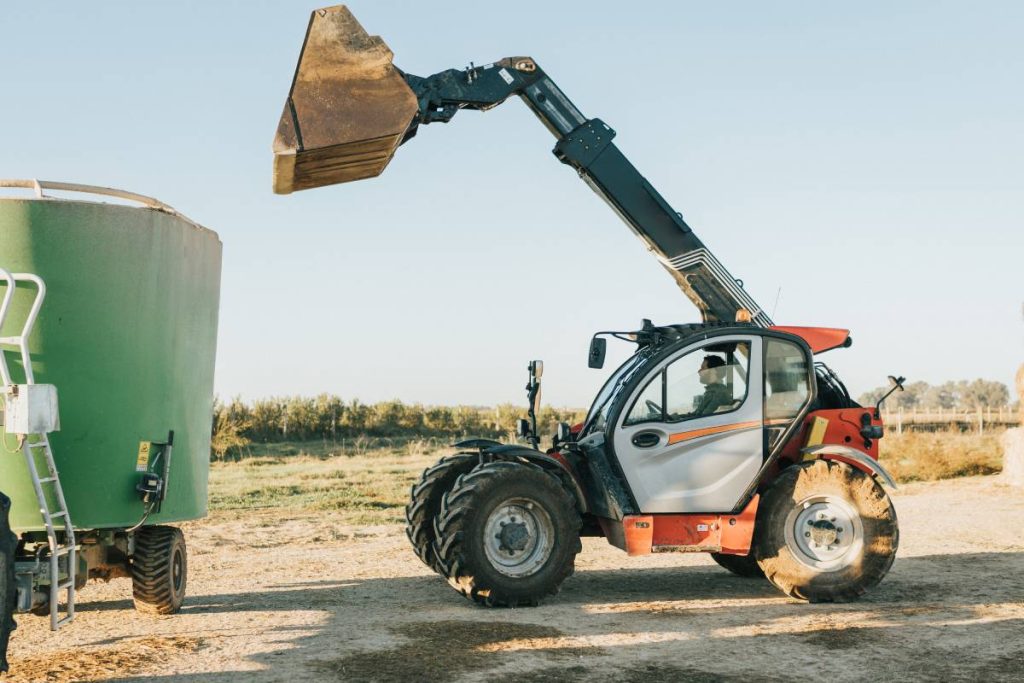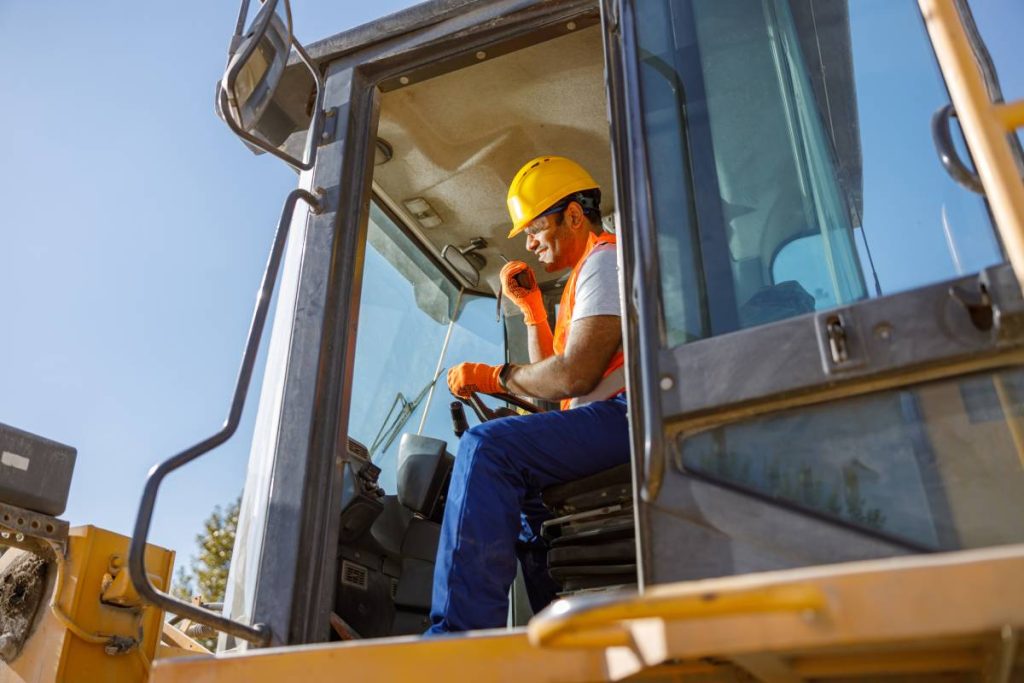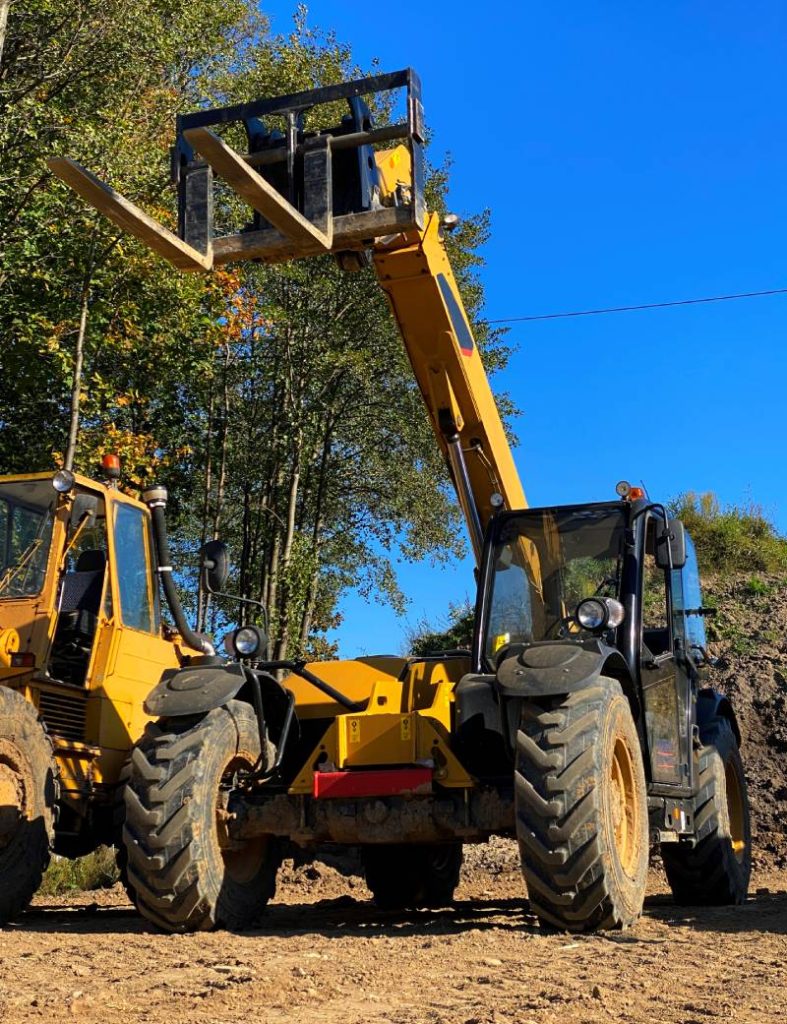A telehandler, also known as a telescopic handler or boom lift, is a hydraulic machine used for lifting and placing heavy materials. It operates with a crane-like arm called a boom, which can be fitted with various attachments for different tasks. These attachments, such as forks for pallets or buckets for soil, are designed to securely hold specific types of loads.
Think of a telehandler as a mix between a forklift and a crane. Like forklifts, they can transport goods around a work site, but their telescopic booms give them extra reach and precision, similar to cranes. This means they can move heavy loads with accuracy and flexibility, making them invaluable for various projects.
You might also read:
- How many years do car batteries last and how do I know if my car battery needs replacing?
- Is it safe to live in a container home are they a good investment and is it legal?
A telehandler is a versatile piece of machinery commonly used in construction, agriculture, and other industries. Its name might sound fancy, but its purpose is simple: it’s like a forklift on steroids with a telescopic boom.
What Does a Telehandler Do?
Imagine needing to lift heavy loads to high places or move them across rough terrain. That’s where a telehandler shines. It can do the heavy lifting, quite literally! Whether it’s loading pallets onto a truck, lifting building materials to upper floors, or reaching over obstacles, a telehandler gets the job done.
How Does It Work?
The magic of a telehandler lies in its telescopic boom. It can extend forward and upward, giving it a long reach and impressive lifting capabilities. Some telehandlers can reach heights of over 15 metres! Plus, they usually come with various attachments like forks, buckets, or even platforms, making them adaptable to different tasks.

Where Is It Used?
- Construction Sites: Telehandlers are like the workhorses of construction. They lift heavy materials like bricks, steel beams, and lumber with ease. Their ability to reach high and manoeuvre in tight spaces makes them indispensable.
- Agriculture: Farmers love telehandlers too! They use them to stack hay bales, load grain into silos, or move equipment around the farm. The versatility of a telehandler saves time and effort in agricultural operations.
- Warehouses: In busy warehouses, telehandlers help with stacking and moving inventory. They can swiftly transport goods from one place to another, streamlining logistics and improving efficiency.
- Landscaping: When it comes to landscaping projects, telehandlers come in handy for lifting trees, moving soil, or placing decorative elements. Their ability to navigate uneven terrain makes them ideal for outdoor work.
Safety First
Operating a telehandler requires skill and caution. Safety measures like proper training, regular maintenance, and adherence to load limits are crucial. Operators must be aware of their surroundings and follow safety protocols to prevent accidents.
Telehandlers and forklifts are both used for lifting and moving loads, but they have some key differences in their design, capabilities, and typical applications.
Design:
- Forklift: Forklifts have a compact design with two forks attached to the front that can be raised and lowered to lift loads. They usually have a counterweight at the rear to balance the weight of the load at the front.
- Telehandler: Telehandlers have a more versatile design featuring a telescopic boom that can extend forward and upward. They often have various attachments like forks, buckets, or platforms that can be interchanged based on the task at hand.
Lifting Capacity:
- Forklift: Forklifts are typically designed for lifting loads to moderate heights, usually up to around 5-8 metres depending on the model. They are well-suited for indoor use in warehouses and distribution centres.
- Telehandler: Telehandlers have a greater lifting capacity and can reach much higher heights compared to forklifts. Some telehandlers can lift loads over 15 metres high, making them ideal for outdoor construction and agricultural applications.
Manoeuvrability:
- Forklift: Forklifts are designed for manoeuvring in tight spaces, such as narrow aisles in warehouses. They have a smaller turning radius and are more agile in confined areas.
- Telehandler: Telehandlers are more versatile in terms of terrain traversal. They are equipped with large, rugged tyres and can navigate uneven terrain, making them suitable for outdoor use on construction sites or farms.
Versatility:
- Forklift: Forklifts are primarily designed for lifting palletized loads and are most commonly used in warehouse and industrial settings.
- Telehandler: Telehandlers are more versatile due to their ability to use various attachments. They can lift not only palletized loads but also materials like lumber, steel beams, and even personnel with the right attachment. This makes them suitable for a wider range of applications, including construction, agriculture, landscaping, and more.
In essence, while both telehandlers and forklifts serve the purpose of lifting and moving loads, telehandlers offer greater versatility, higher lifting capacities, and the ability to navigate rough terrain, making them indispensable in outdoor and more varied work environments. Forklifts, on the other hand, excel in indoor settings with their compact design and precise manoeuvrability.

Telehandlers offer a range of benefits across various industries due to their versatile design and capabilities:
1. Versatility:
- Multiple Attachments: Telehandlers can be equipped with various attachments such as forks, buckets, or platforms, allowing them to perform a wide range of tasks. This versatility makes them suitable for lifting, loading, digging, and even personnel lifting with the appropriate attachment.
2. High Lifting Capacity:
- Heavy Lifting: Telehandlers have impressive lifting capacities, with some models capable of lifting loads over 10,000 pounds. This makes them ideal for handling heavy materials like steel beams, lumber, or construction equipment.
3. Extended Reach:
- Telescopic Boom: The telescopic boom of a telehandler allows it to extend forward and upward, reaching heights of over 50 feet in some cases. This extended reach makes it easier to access high places and work efficiently on multi-story construction projects.
4. Maneuverability:
- Terrain Versatility: Telehandlers are equipped with rugged tyres and powerful engines, enabling them to navigate rough terrain with ease. Whether it’s a construction site, farm, or landscaping project, telehandlers can handle uneven ground and obstacles effectively.
5. Time and Labor Savings:
- Efficiency: By combining the functions of multiple machines into one, telehandlers streamline operations and reduce the need for additional equipment. This saves time and labour costs, increasing overall efficiency on worksites.
6. Improved Safety:
- Stability: Telehandlers are designed with stability in mind, with features like a low centre of gravity and outriggers for added support when lifting heavy loads. Additionally, safety features such as load sensors and operator training help prevent accidents and ensure safe operation.
7. Adaptability:
- Multi-Industry Use: Telehandlers find applications across various industries, including construction, agriculture, warehousing, and landscaping. Their adaptability to different tasks and environments makes them a valuable asset for businesses in diverse sectors.
8. Increased Productivity:
- Swift Operations: With their ability to lift, move, and place heavy loads quickly and efficiently, telehandlers contribute to increased productivity on worksites. They reduce downtime and keep projects on schedule by completing tasks in a timely manner.
9. Cost-Effectiveness:
- Long-Term Investment: While the initial cost of purchasing or renting a telehandler may seem high, their versatility and durability make them a cost-effective long-term investment. They can replace multiple pieces of specialized equipment, reducing overall capital expenditure.
What are the Different uses of Telehandler Attachments?
Telehandlers are incredibly versatile machines, thanks in part to their ability to use various attachments. These attachments enhance their functionality and enable them to perform a wide range of tasks across different industries. Here are some common telehandler attachments and their uses:

1. Forks:
- Pallet Forks: The most common attachment for telehandlers, pallet forks are used for lifting and transporting palletized loads such as boxes, crates, or building materials.
2. Bucket:
- Loader Bucket: A loader bucket attachment transforms the telehandler into a mini-loader, allowing it to scoop up and transport loose materials like soil, gravel, sand, or debris.
3. Platform:
- Work Platform: With a work platform attachment, telehandlers can lift personnel to elevated heights for tasks such as maintenance, repairs, painting, or installation work.
4. Crane:
- Jib Crane: A jib crane attachment adds lifting capabilities to the telehandler, allowing it to hoist and manoeuvre heavy loads with precision. It’s commonly used in construction and material handling applications.
5. Hook:
- Hook Attachment: Hooks are used for lifting objects that cannot be lifted with forks, such as machinery, equipment, or bulky items. They provide a secure attachment point for lifting heavy loads.
6. Grapple:
- Grapple Bucket: A grapple bucket attachment features hydraulic claws that can grab and hold onto materials like logs, brush, or demolition debris. It’s commonly used in forestry, landscaping, and demolition work.
7. Auger:
- Auger Attachment: An auger attachment turns the telehandler into a powerful drilling machine, capable of digging holes for fence posts, foundations, or planting trees. It’s commonly used in construction, agriculture, and landscaping.
8. Sweeper:
- Sweeper Attachment: A sweeper attachment consists of rotating brushes that sweep debris and dirt from surfaces such as roads, sidewalks, or warehouse floors. It’s useful for cleaning and maintenance tasks.
9. Lifting Beam:
- Lifting Beam Attachment: Lifting beams are used for lifting long or awkwardly shaped loads that cannot be easily lifted with forks or hooks. They provide a stable lifting point and distribute the load evenly.
10. Bale Clamp:
- Bale Clamp Attachment: Bale clamps are used in agricultural settings for handling bales of hay, straw, or other crops. They securely grip the bales for lifting and stacking operations.
11. Man Basket:
- Man Basket Attachment: Similar to a work platform, a man basket attachment is used for lifting personnel to elevated heights. It provides a secure and enclosed space for workers to perform tasks safely.
These are just a few examples of the many attachments available for telehandlers. Depending on the specific task at hand, telehandler operators can choose the appropriate attachment to enhance efficiency and productivity on the job site.
Buying or Renting a Telehandler?
Who Should Buy
- Companies with frequent use of telehandlers in their daily operations and the financial capability to afford the initial purchase and ongoing maintenance costs.
- Buyers may also need to budget for purchasing attachments and maintenance materials separately.
- Consideration of the size of the telehandler is crucial, as it determines the weight it can carry. Small units can handle loads up to 4,440 pounds, while larger ones can manage up to 16,000 pounds.
Who Should Rent
- Operators who don’t require a telehandler for regular, everyday use.
- Renting allows flexibility to choose a unit that matches the specific needs of each project, without the commitment of ownership.
- Renters have the advantage of getting assistance from the rental company if the telehandler malfunctions during a job.
- Renting can often be the more cost-efficient option in the long run, especially for projects with varying requirements.



























